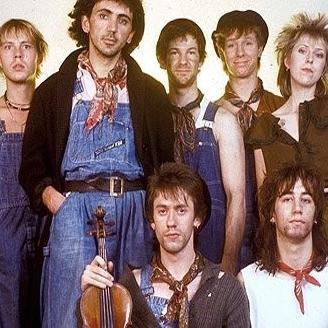
Dexys Midnight Runners
by Steve Huey\r Dexys Midnight Runners are best known in America as one of new waves ultimate one-hit wonders, thanks to their 1982 number one smash Come on Eileen, a distinctive fusion of 80s pop, Celtic folk, and blue-eyed soul. In the U.K., however, they earned a fair amount of critical acclaim and made a greater impression on the public consciousness with their frequent changes in sound, wardrobe, and personnel.\r \r Dexys were formed in 1978 by singer/guitarist/songwriter Kevin Rowland and singer/guitarist Kevin Al Archer (who changed his first name to avoid confusion). Both had been members of the Birmingham, England, punk band the Killjoys, and Rowland, who was ethnically Irish, had split his childhood between London, Ireland, and Birmingham, and soaked up the influence of Irish folk and the so-called Northern soul music popular in the Midlands. Seeking a new direction, Rowland and Archer decided to put together a full-fledged soul outfit and named it after the stimulant Dexedrine, a popular drug on the Northern soul scene (despite the strict no-drinking-or-drugs policy Rowland later imposed on the band). The lineup eventually settled on trombonist Big Jim Paterson, tenor saxophonist Geoff Blythe, alto saxophonist Steve Babyface Spooner, keyboardist Mick Talbot (who replaced Pete Saunders, was once a member of the Merton Parkas and later joined the Style Council), bassist Pete Williams, and drummer Andy Stoker Growcott (who replaced Bobby Junior). Acutely image-conscious, Rowland tried to reflect the bands working-class roots by dressing them as New York dockworkers, with a wardrobe lifted straight from the Martin Scorsese/Robert DeNiro film Mean Streets. The band struggled financially at first, especially given its large membership, and according to legend, Rowland organized (or at least encouraged) shoplifting expeditions to make ends meet.
